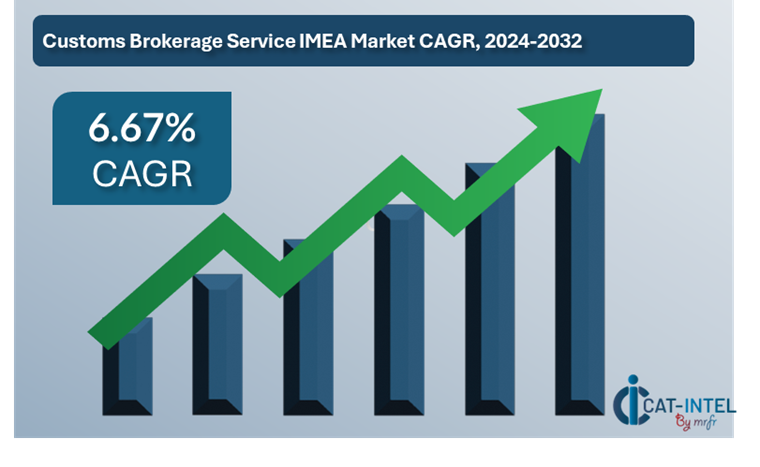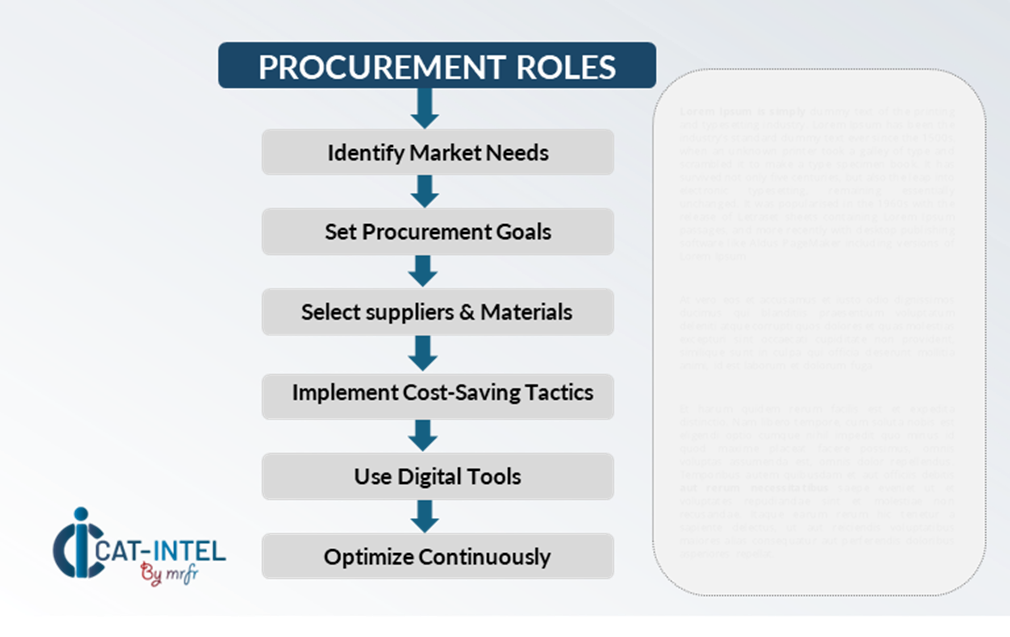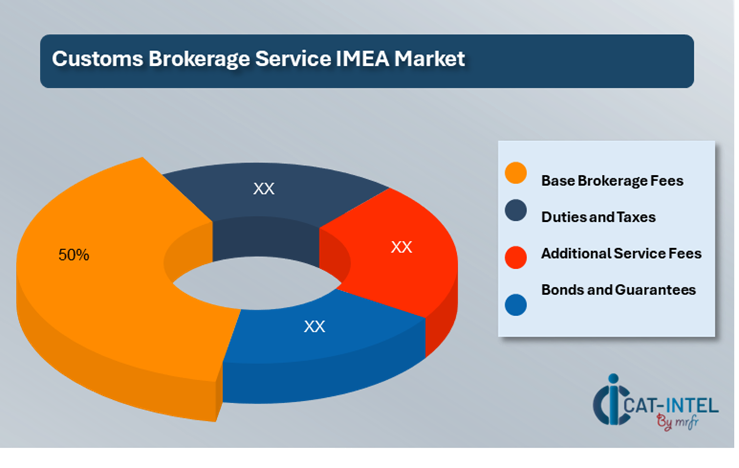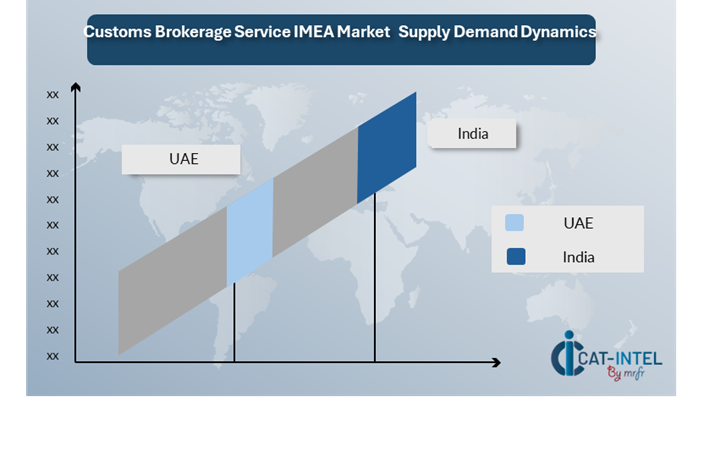Summary Overview
Customs Brokerage Services Market Overview
The IMEA (India, Middle East, and Africa) Customs Brokerage Services market is witnessing rapid growth driven by increasing international trade, rising e-commerce activities, and technological advancements in supply chain management. Governments across the region are also implementing trade facilitation policies, encouraging the adoption of professional customs brokerage services. This market benefits from innovative digital solutions, streamlining operations and reducing bottlenecks.
Our report provides a detailed analysis of emerging procurement trends, focusing on opportunities for cost reduction through strategic partnerships and digital transformation. It also addresses future supply chain challenges, emphasizing the critical role of data-driven procurement tools in accurately forecasting regulatory and market dynamics. Strategic sourcing and procurement intelligence are essential in optimizing supply chain efficiency and managing risks effectively.
The outlook for the Customs Brokerage Services market in IMEA remains optimistic, with several key trends and projections indicating strong growth through 2032:
-
Market Size: The global Customs Brokerage Services market is projected to grow at a compound annual growth rate (CAGR) of 6.67% from 2024 to 2032. The IMEA region is poised to experience significant contributions to this growth.

Key Trends and Sustainability Outlook
-
Digital Transformation: The adoption of advanced technologies, such as blockchain and electronic data interchange (EDI), is streamlining customs procedures, enhancing efficiency, and minimizing errors. -
E-commerce Boom: Rapid growth in online retail is driving higher volumes of cross-border trade, necessitating effective customs brokerage solutions for small parcel shipments. -
Regulatory Compliance: Governments in the IMEA region are focusing on modernizing trade policies, creating demand for expert brokerage services to ensure seamless compliance with regulations.
Growth Drivers
-
Global Trade Expansion: The increasing complexity of international trade due to market globalization is boosting demand for professional customs brokerage services. -
Supply Chain Optimization: Businesses are leveraging customs brokers to enhance supply chain efficiency and reduce delays at borders. -
Technological Advancements: Innovations in automation and real-time tracking are improving service delivery and client satisfaction. -
Sustainability Initiatives: A focus on reducing carbon footprints and adopting sustainable practices in logistics is reshaping the brokerage landscape.
Overview of Market Intelligence Services for the Customs Brokerage Services MarketRecent analysis indicate price fluctuations in customs brokerage services due to rising operational costs and changing trade policies. To address these challenges, procurement reports provide cost breakdowns and strategies for mitigating cost volatility. By leveraging these insights, stakeholders can optimize their procurement processes, manage risks, and maintain a competitive edge.
Procurement Intelligence for Customs Brokerage Services IMEA Market: Category Management and Strategic Sourcing
To stay ahead in the IMEA Customs Brokerage Services market, companies are optimizing procurement through spend analysis, supply market intelligence, and strategic sourcing. Procurement category management is vital for aligning sourcing strategies with business goals, ensuring cost-effective procurement, and timely service delivery. Leveraging these practices enhances supply chain efficiency, reduces costs, and ensures compliance, providing a competitive edge in this dynamic market.

Pricing Outlook for Customs Brokerage Services IMEA Market: Spend analysis
The Customs Brokerage Services market in the IMEA region is experiencing a dynamic pricing landscape influenced by several key factors:
-
Regulatory Changes: Evolving trade policies and customs regulations necessitate continuous compliance efforts, impacting service costs. -
Technological Advancements: Investments in digital tools and automation enhance service efficiency but may lead to increased operational expenses. -
Global Trade Dynamics: Fluctuations in international trade volumes, driven by geopolitical events and economic conditions, affect demand for customs brokerage services, influencing pricing structures. -
Supply Chain Disruptions: Challenges such as port congestion and transportation delays can increase the complexity and cost of customs clearance processes.
Cost Breakdown for Customs Brokerage Services in the IMEA Market: Cost-Saving Opportunities

- Base Brokerage Fees (50%)
-
Description: Represents standard charges for essential services, including document preparation, customs declaration submissions, and communication with customs authorities. -
Trends: Fees vary based on shipment complexity and broker expertise. For instance, basic brokerage fees typically range from $50 to $150 per customs entry.
- Duties and Taxes (XX%)
- Additional Service Fees (XX%)
- Bonds and Guarantees (XX%)
Cost saving opportunity: Negotiation Lever and Purchasing Negotiation Strategies
In the IMEA Customs Brokerage Services market, cost savings can be achieved through volume-based negotiations, long-term contracts, and competitive bidding to secure favourable rates. Leveraging technology for real-time tracking and compliance reduces errors and enhances efficiency. Performance-based incentives and strategic partnerships further optimize service quality while controlling costs. These strategies enable businesses to streamline operations and improve supply chain management effectively.

Supply and Demand Overview of the Customs Brokerage Service IMEA Market: Demand-Supply Dynamics and Buyer Intelligence for Effective Supplier Relationship Management (SRM)
The Customs Brokerage Services market in the IMEA region is witnessing strong growth, driven by increasing global trade and the expansion of e-commerce. The demand for customs brokerage services is particularly influenced by the rising complexity of international trade regulations and the need for efficient customs clearance.
Demand Factors:
-
Global Trade Expansion: The increase in international trade necessitates effective customs clearance, boosting the demand for brokerage services. -
E-commerce Growth: The rise in online retail increases the need for timely customs processing to meet consumer expectations. -
Regulatory Complexity: Evolving trade regulations across different regions require expertise in customs procedures, driving the demand for professional brokerage services.
Supply Factors:
-
Technological Advancements: The adoption of digital tools and automation enhances the efficiency and capacity of customs brokers. -
Market Fragmentation: The presence of numerous service providers, including multinational logistics companies and specialized firms, influences service availability and competition. -
Value-Added Services: Brokers offering additional services such as supply chain management and trade consulting gain a competitive edge in the market.
Regional Demand-Supply Outlook: Customs Brokerage Service IMEA Market

The Customs Brokerage Service market in the IMEA (India, Middle East, and Africa) region is experiencing increased demand, driven by the growth in international trade, e-commerce, and complex regulatory environments.
India and the Middle East: Key Players in the Customs Brokerage Services Market
-
Leading Markets: India, the UAE, and Saudi Arabia are emerging as significant players in the IMEA region due to their strategic location as trade hubs, facilitating international cargo movement. -
Export and Import Growth: With the rise in exports and imports across the region, customs brokers play a crucial role in navigating complex tariffs, regulations, and customs documentation, enabling smoother trade flows. -
Technological Advancements: The growing adoption of digital customs clearance tools, automation, and e-documentation is improving efficiency and streamlining the clearance process, enhancing service offerings. -
Regulatory Complexity: As trade regulations become more stringent, particularly in the Middle East and Africa, businesses are increasingly relying on customs brokers to ensure compliance and to manage risks associated with customs clearance. -
Consumer and E-commerce Trends: E-commerce growth in the region is driving demand for fast, efficient customs brokerage services to handle the influx of cross-border shipments, particularly in consumer goods and electronics.
India remains a key hub Customs Brokerage services IMEA market and its growth
Supplier Landscape: Supplier Negotiations and Strategies - Customs Brokerage Service IMEA Market
The Customs Brokerage Service market in the IMEA (India, Middle East, and Africa) region is supported by a wide range of suppliers providing critical services and technologies essential for efficient and compliant customs clearance processes. These suppliers include logistics providers, technology companies, customs software solutions, and transportation services that help navigate the complexities of cross-border trade.
Key players in this market facilitate the movement of goods, ensuring compliance with local and international regulations. The supplier landscape is characterized by strong partnerships between customs brokers, freight forwarders, and government agencies, focusing on optimizing operational efficiency, reducing lead times, and minimizing costs.
Some of the key suppliers in the Customs Brokerage Service IMEA market include:
- DHL Global Forwarding
- Kuehne + Nagel
- Expeditors International
- DB Schenker
- C.H. Robinson Worldwide
- C.H. Robinson Worldwide
- Bolloré Logistics
- Schenker AG
- Rhenus Logistics
- TNT Express

Key Development: Procurement Category significant development
Key Development |
Description |
Impact |
Key Players Involved |
Digital Transformation |
Integration of advanced technology such as AI and blockchain to streamline customs processes, enhance visibility, and improve data accuracy. |
Increased efficiency and reduced human error. |
Kuehne + Nagel, DHL, Maersk |
Sustainability Initiatives |
Adoption of eco-friendly practices like reducing carbon emissions in transportation and green logistics. |
Cost savings and environmental impact reduction. |
TVS Logistics, Blue Dart, DHL |
Automation in Customs Processing |
Introduction of automated customs clearance systems, reducing paperwork and processing times. |
Faster clearance and reduced operational costs. |
Maersk, Clearwin Logistics |
E-commerce Growth |
Rising demand for customs brokerage services due to the expansion of online shopping and cross-border e-commerce. |
Increased volume of shipments, driving demand for customs services. |
DHL, Blue Dart, V-Trans India |
Procurement Attribute/Metric |
Details |
Market Sizing |
The Customs Brokerage Services market in the IMEA region is projected to grow from USD 4.8 billion in 2023 to USD 7.6 billion by 2032, with a CAGR of 6.67% during the forecast period. |
Adoption of Customs Brokerage Services |
Rising demand for efficient cross-border trade, driven by e-commerce growth and increased global trade, is accelerating the adoption of advanced customs brokerage services in the IMEA region. |
Top Strategies for 2024 |
Focus on automation, digital transformation, and regulatory compliance. Enhanced partnerships with freight forwarders to provide integrated services and improve efficiency. |
Automation in Customs Processing |
Over 50% of customs brokers in the IMEA region are implementing automated customs clearance systems, improving turnaround times and reducing costs. |
Procurement Challenges |
Challenges include complex regulatory environments, supply chain disruptions, changing tariffs, and the need for compliance with environmental standards. |
Key Suppliers |
Leading players include DHL, Kuehne + Nagel, DB Schenker, Maersk, and Prakash Logistics, offering diverse and integrated customs brokerage solutions. |
Key Regions Covered |
Major markets include India, China, the UAE, South Africa, and the Middle East, with growing demand across these regions due to expanding trade networks. |
Market Drivers and Trends |
Growth is driven by increasing trade volumes, the rise of e-commerce, regulatory changes, and the need for faster, more transparent customs clearance processes. |








